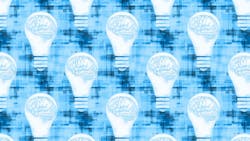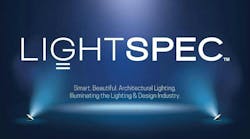Even when some niche applications of solid-state lighting (SSL) are not, strictly speaking, highly commercialized, the potential for enriching lives with technology that addresses health and wellbeing can bring huge returns to society on a grander scale.
For example, we might consider mental health, which impacts just about everyone on this ball of rock. If we want to get mercenary about it, untreated or unstabilized mental health conditions can significantly strain healthcare systems and economies, when sufferers are not well enough to work consistently. On the compassionate level, such conditions can reduce human wellbeing so severely…well, I think we are all aware of the potential consequences on a scale of detriments.
But I mean to uplift! While attending a webinar called “Good Light – Good Life” hosted by the Good Light Group in celebration of UNESCO’s International Day of Light 2021, I listened to a talk on light therapy within the public healthcare system in the Netherlands. Let me be clear here: This blog is not a summary overview of the existing body of research; it is merely a sharing and commentary on the themes contained within a presentation made on May 11.
For quick background, the Good Light Group is a non-profit advocacy organization launched by former Philips Lighting executive Jan Denneman to refocus research, commercialization, and public education on human-centric lighting into a concept he has called “nutritive lighting.”
As I was saying, speaker Lisette Rops is a psychiatrist, head of the department of bipolar disorder and head of the department of light and lifestyle treatment at GGzE, which is the Dutch Association of Mental Health and Addiction Care.
Rops summarized the relationship between the human biological clock or circadian rhythm and several types of mental health conditions, mood disorders, and neurological diseases. The biological clock can dictate healing, and it prioritizes overall body repairs on a schedule, as well as stimulating the production of various hormones and chemical receptors, she said. One thing the GGzE team found that has been corroborated by other studies devoted to productivity and melatonin production is that very bright light in the morning hours has been of great value in treating affective disorders, in this case bipolar disorder.
You’re wondering what’s unusual enough to dedicate an entire blog to this. Light therapy has already been investigated for seasonal affective disorder and other mood/affective disorders, in one case, as we reported, involving installed tunable area lighting in a Norwegian clinic.
Here is the kicker. Unlike most light therapy studies and clinical data-driven lighting installations, the designed treatment has been carried out in a public venue.
Teams of doctors through GGzE would recommend the light therapy approach to patients who met the set criteria through a questionnaire. The qualifying patients received about 30 minutes of light therapy a day, five days per week, in a public café equipped with light therapy boxes that delivered light levels of 10,000 lx without ultraviolet radiation. At the “LichtCafé,” which is currently being run at the Grand Café Het Ketelhuis, referred patients can enjoy the atmosphere of the coffee shop, read, or socialize while they sit at the light therapy station during set morning hours. According to Rops and the translated LichtCafé brochure, the light output can be compared to that of bright morning sunshine.
Rops stated that a patient cannot be in a hypomanic or manic state during the treatment, as it could have the undesired effect of overstimulation, but it has shown positive results for those in a depressive state. With few and well-tolerated side effects, participants in the initial study experienced remission rate of 33% and no manic episodes. (It’s my understanding that 59 people participated in the early study.) They attended the café for three weeks of treatment and completed the QIDS (Quick Inventory of Depressive Symptomatology) before and after every week of the treatment. Rops said according to a July 2020 survey, client satisfaction rate was 8.2 out of 10. And LichtCafé served nearly 400 clients between 2019–2020.
Rops’ message was one of optimism and underlined that multiple quality of life factors, or “zeitgebers,” optimized the participants’ ability to manage their bipolar disorder:
- Light
- Sleep
- Daytime routine (consistency of schedules has shown to be helpful during treatment)
- Physical activity
- Nutrition
- Social activity
All of these factors, she explained, were addressed by lifestyle coaches and dieticians in consultation with the study team and associated clinicians. The studies and designed therapy were carried out in a manner to normalize the public awareness and treatment of bipolar disorder, while meeting the participants’ need for social activity, especially because they can have difficulty connecting with people and even leaving the home during a depressive episode.
I did request publications of note on the light therapy trial to include here but was unable to get that material in time for this blog. You can visit the GGzE website for more information. Still, I felt it was a novel take on combining science with compassionate care, and the results seem encouraging.
For up-to-the-minute LED and SSL updates, why not follow us on Twitter? You’ll find curated content and commentary, as well as information on industry events, webcasts, and surveys on our LinkedIn Company Page and our Facebook page.





